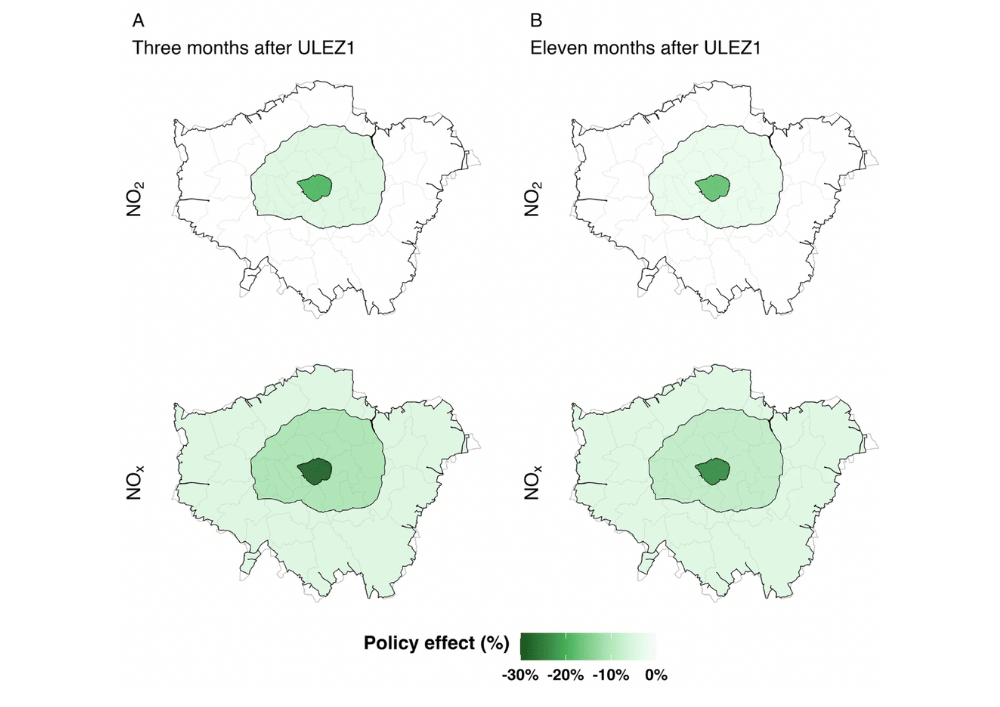
The Ultra Low Emission Zone (ULEZ) was designed to cut vehicle pollution in London by charging drivers of older, more polluting vehicles. Using a new causal analysis method, this study by Tong, Dai, Liu, Bartington, Cole, Elliott, and Shi from the University of Birmingham provides one of the most detailed evaluations of the ULEZ’s real impact on air quality.
The team found that the 2019 central London ULEZ led to a 19.6% reduction in nitrogen dioxide (NO₂) and a 28.8% reduction in nitrogen oxides (NOx) at roadside locations within three months of implementation. These improvements also reached some areas beyond the zone. However, the 2023 city-wide expansion showed no detectable change in air pollution levels. Fine particles (PM₂.₅), which pose serious health risks, also remained largely unchanged.
The authors note that even after several rounds of ULEZ policies, NO₂ and PM₂.₅ levels still exceed World Health Organisation guidelines, meaning London’s air remains far from clean. They conclude that:
“Our results illustrate that ULEZ alone is insufficient to clean up the air in London and emissions from other sources such as domestic, commercial and industrial emissions and regional pollution should also be tackled.”
This research underscores that while clean-vehicle policies work, real progress on air quality will require broader action — cutting emissions from homes, industries, and regional pollution across the UK and Europe.
Read the full paper here: